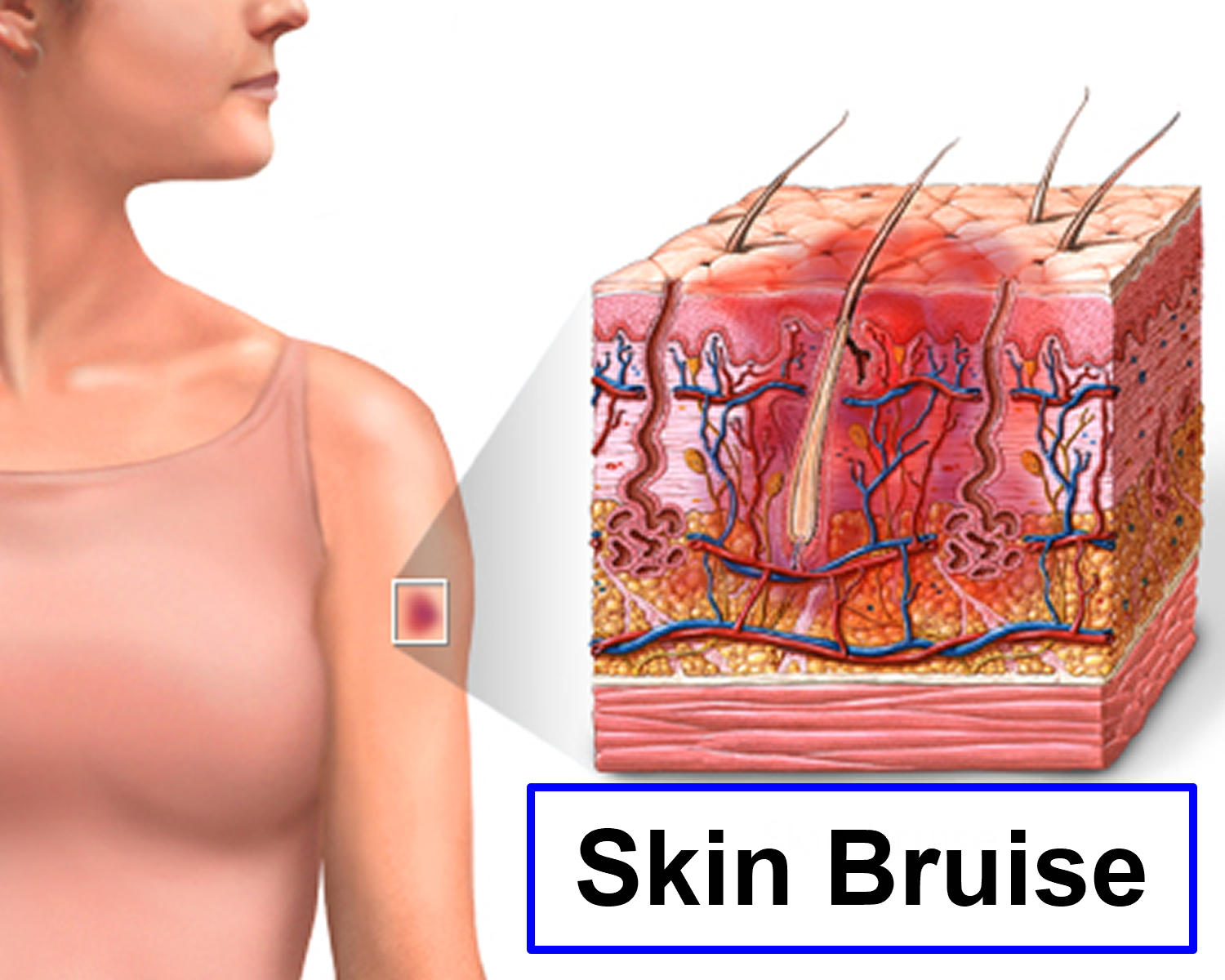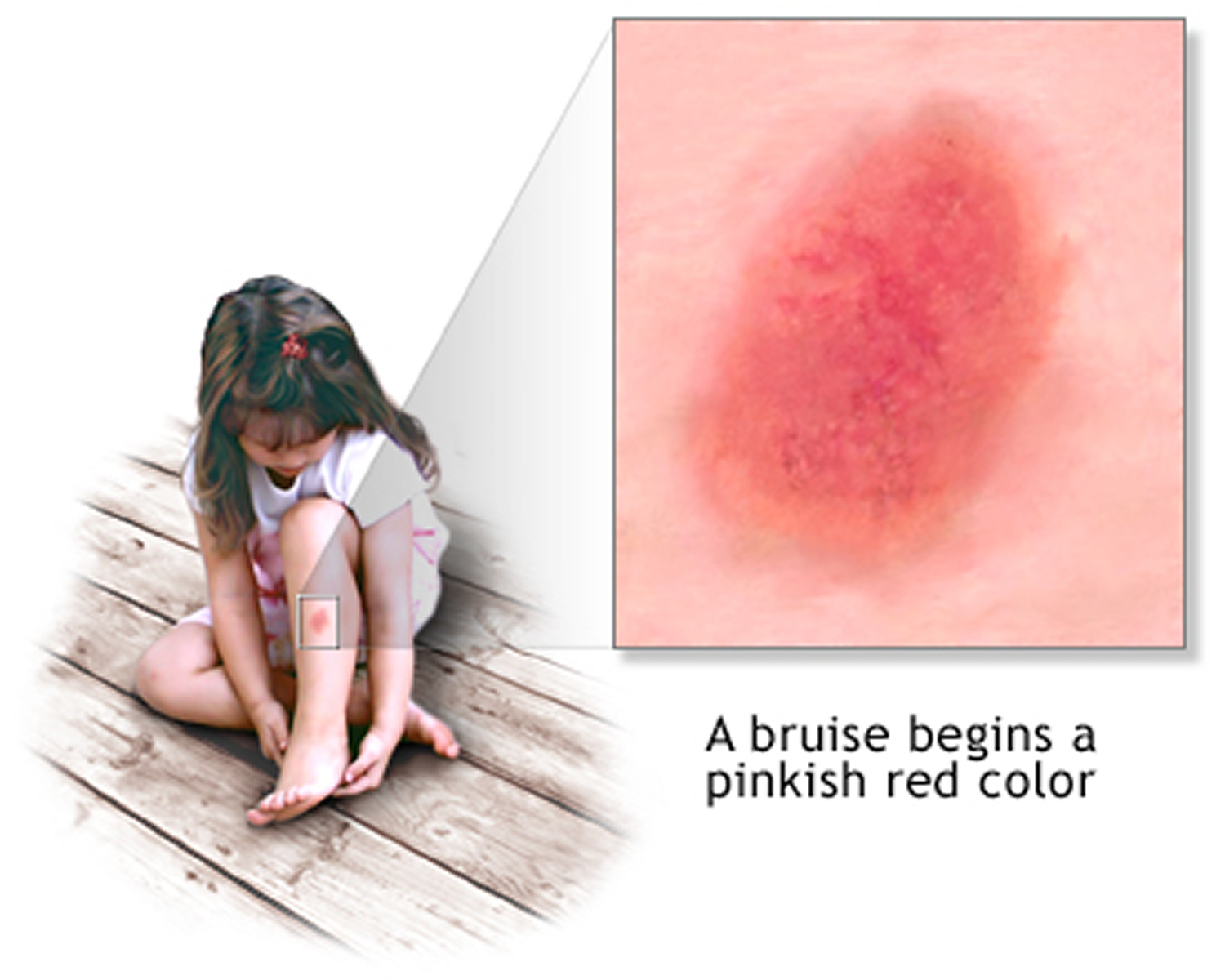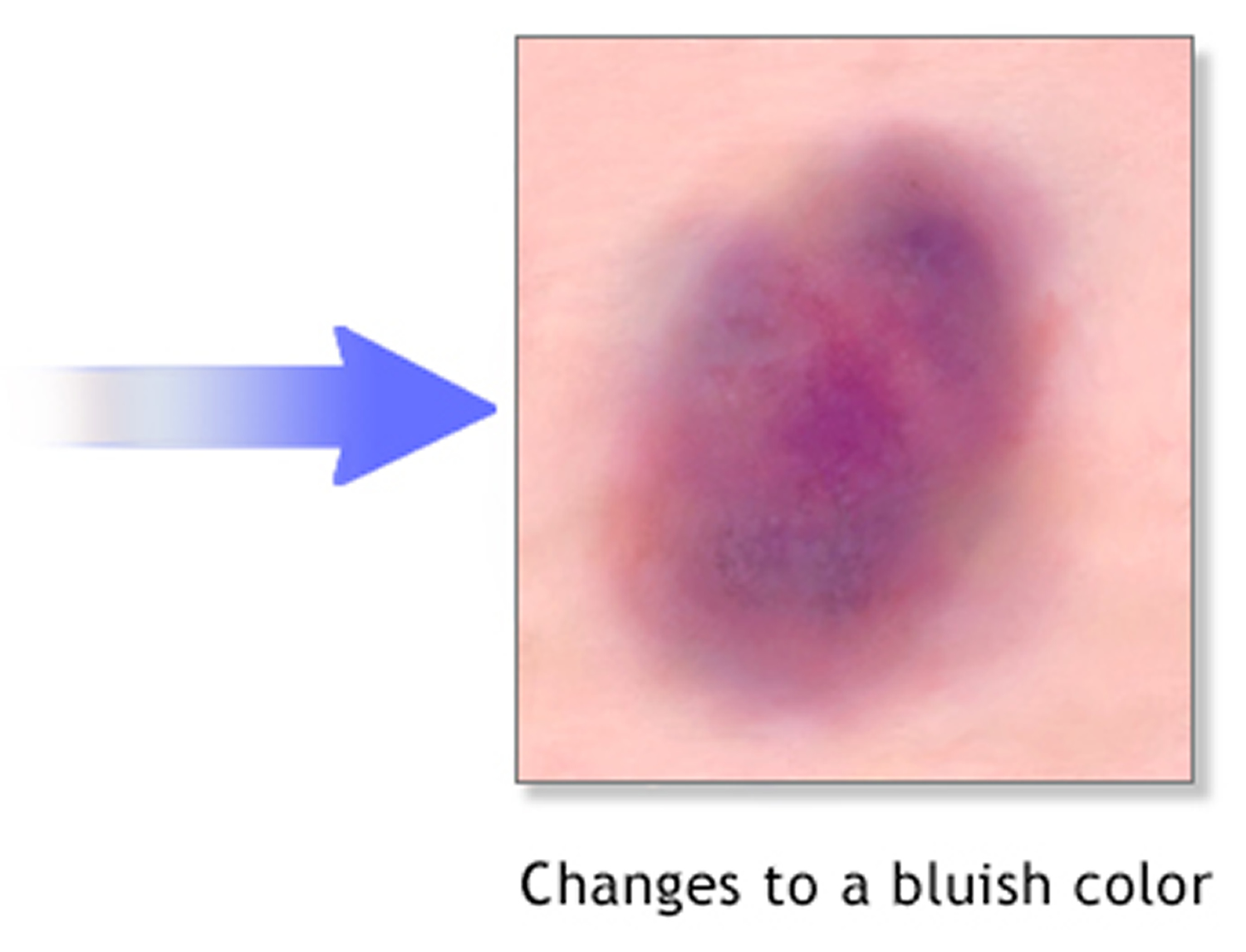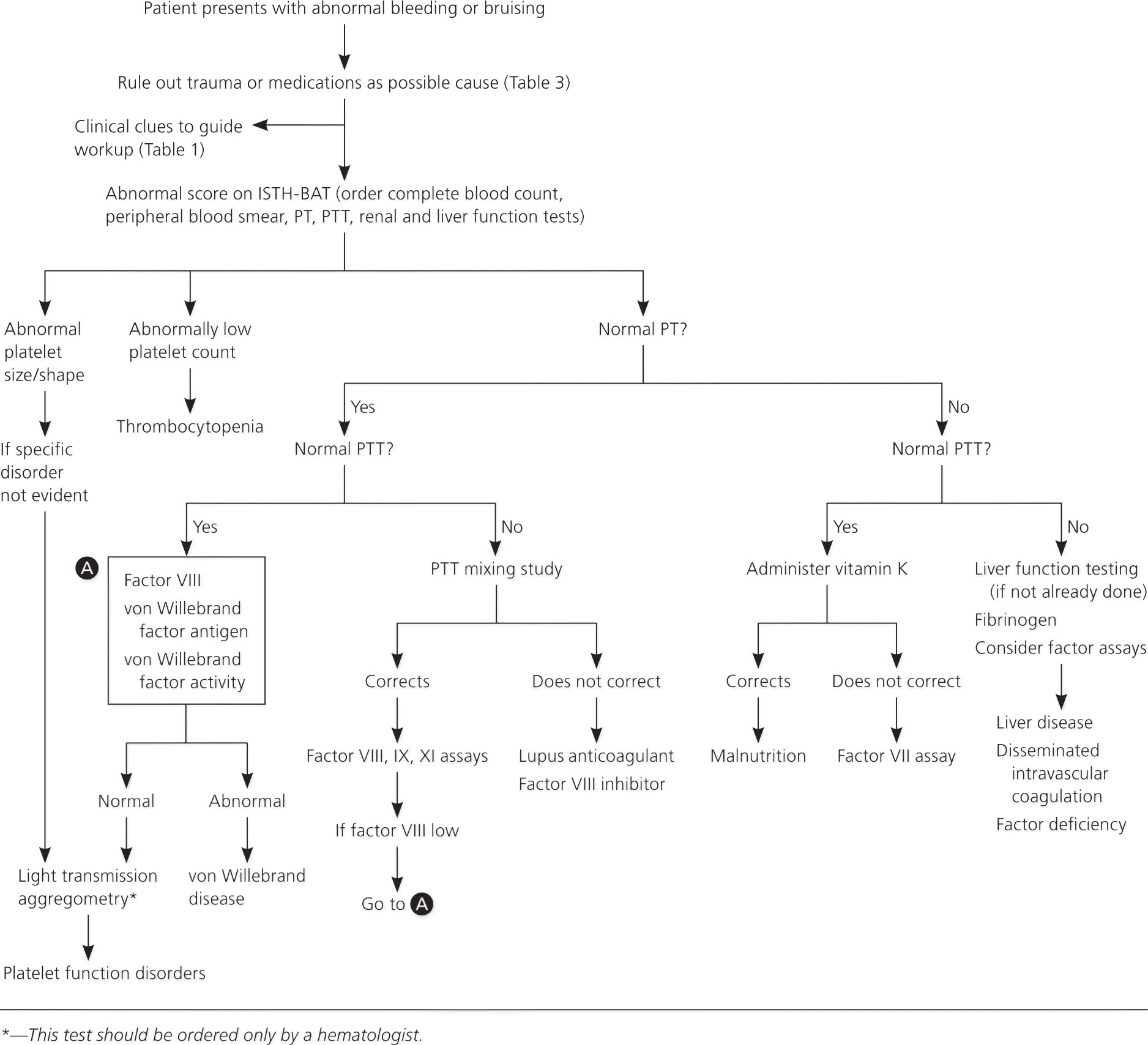Contents
What is a bruise
A bruise is a mark on your skin caused by blood trapped under the surface 1. Bruise happens when an injury crushes small blood vessels underneath the skin, involving the muscle fibers and connective tissue, but does not break the skin. Those small blood vessels (capillaries) break open and leak blood under the skin. With no place to go, the blood gets trapped, forming a red or purplish mark that’s tender when you touch it — a bruise.
A bruise, also called a contusion or an ecchymosis.
Bruises can happen for many reasons, but most are the result of bumping and banging into things — or having things bump and bang into you. Fortunately, as anyone who’s ever sported a shiner knows, the mark isn’t permanent.
Figure 1. Bruise

There are three types of bruises 2:
- Subcutaneous bruise — beneath the skin. Bruises occur when blood vessels break, due to some kind of force, and leak blood into areas under the skin. The main symptoms of a bruise are pain, swelling, and skin discoloration. A bruise begins as a pinkish, red color that can be very tender to touch.
- Intramuscular bruise — within the belly of the underlying muscle. A muscle bruise occurs when a direct blow from an object strikes part of the body, damaging the underlying muscle fibers and connective tissue without breaking the skin. A muscle bruise can cause pain and swelling and limited range of motion of the joint near the injury. Depending upon the extent of injury, a muscle bruise can take days or months to heal.
- Periosteal bruise — bone bruise. A bone bruise results from compressive forces incurred during an injury. The damaged area occurs in the medullary portion of the bone and can be accompanied by bleeding and swelling. Bruises are often caused by falls, sports injuries, car accidents, or blows from other people or objects. Bruises can last from days to months, with the bone bruise being the most severe and painful.
Bruises can last from days to months. A bone bruise is the most severe and painful.
Bruises are often painful and swollen. You can get skin, muscle and bone bruises. Bone bruises are the most serious.
It can take months for a bruise to fade, but most last about two weeks. They start off a reddish color, and then turn bluish-purple and greenish-yellow before returning to normal. To reduce bruising, ice the injured area and elevate it above your heart. See your health care provider if you seem to bruise for no reason, or if the bruise appears to be infected.
Figure 2. Bruise healing (stage 1)

Note: A bruise begins as a pinkish, red color that can be very tender to touch.
Figure 3. Bruise healing (stage 2)

Note: Within hours a bruise will turn into a dark blue or purple color. As the bruise begins to heal it changes colors. The color change is due to the biochemical breakdown of hemoglobin that is found in the blood. As the different components of the blood are broken down, different colors will appear in the bruise.
Figure 4. Bruise healing (stage 3)

Note: A bruise first begins as a pinkish, red color, changes to dark blue or purple, fades to violet, green, dark yellow, and turns a pale yellow until it completely disappears. A bruise will usually completely heal in 2 weeks
How Long Do Bruises Last ?
You know how a bruise changes color over time? That’s your body fixing the bruise by breaking down and reabsorbing the blood, which causes the bruise to go through many colors of the rainbow before it eventually disappears.
You can pretty much guess the age of a bruise just by looking at its color:
- When you first get a bruise, it’s kind of reddish as the blood appears under the skin.
- Within 1 or 2 days, the hemoglobin (an iron-containing substance that carries oxygen) in the blood changes and your bruise turns bluish-purple or even blackish.
- After 5 to 10 days, the bruise turns greenish or yellowish.
- Then, after 10 or 14 days, it turns yellowish-brown or light brown.
Finally, after about 2 weeks, your bruise fades away.
Causes of bruise
Bruises are often caused by falls, sports injuries, car accidents, or blows received from other people or objects.
If you take a blood thinner, such as aspirin, warfarin (Coumadin), dabigatran (Pradaxa), rivaroxaban (Xarelto), apixaban (Eliquis), or clopidogrel (Plavix), you are likely to bruise more easily.
Who Gets Bruises ?
Anyone can get a bruise. Some people bruise easily, whereas others don’t. Why? Bruising depends on several things, such as:
- how tough the skin tissue is
- whether someone has certain diseases or conditions
- whether a person’s taking certain medications
Also, blood vessels tend to become fragile as people get older, which is why elderly people tend to bruise more easily.
Symptoms of bruise
Main symptoms are pain, swelling, and skin discoloration. The bruise begins as a pinkish red color that can be very tender to touch. It is often difficult to use the muscle that has been bruised. For example, a deep thigh bruise is painful when you walk or run.
Eventually, the bruise changes to a bluish color, then greenish-yellow, and finally returns to the normal skin color as it heals.
First Aid 3
- Place ice on the bruise to help it heal faster and to reduce swelling. Wrap the ice in a clean towel — do not place ice directly on the skin. Apply the ice for up to 15 minutes each hour.
- Keep the bruised area raised above the heart, if possible. This helps keep blood from pooling in the bruised tissue.
- Try to rest the bruised body part by not overworking your muscles in that area.
- If needed, take acetaminophen (Tylenol) to help reduce pain.
In the rare case of compartment syndrome, surgery is often done to relieve the extreme buildup of pressure. Compartment syndrome results from increased pressure on the soft tissues and structures beneath the skin. It can decrease the supply of blood and oxygen to the tissues.
DO NOT
- DO NOT try to drain the bruise with a needle.
- DO NOT continue running, playing, or otherwise using the painful, bruised part of your body.
- DO NOT ignore the pain or swelling.
When to Contact a Medical Professional
See your health care provider right away if you feel extreme pressure in a bruised part of your body, especially if the area is large or very painful. This may be due to compartment syndrome, and can be life-threatening. You should receive emergency care.
Also see your provider if:
- You are bruising without any injury, fall, or other reason. You bruise often and bruises seem to develop for no known reasons.
- There are signs of infection around the bruised area including streaks of redness, pus or other drainage, or fever.
- A bruise isn’t improving after 2 weeks.
- Your bruise is swelling and very painful.
- You can’t move a joint or you think you may have a broken bone.
- The bruise is near your eye and you have difficulty moving your eyes or seeing.
Home remedies for bruises
It’s hard to prevent bruises, but you can help speed the healing process. When you get a bruise, you can use stuff you find right in your freezer to help the bruise go away faster. Applying cold when you first get a bruise helps reduce its size by slowing down the blood that’s flowing to the area, which decreases the amount of blood that ends up leaking into the tissues. It also keeps the inflammation and swelling down. All you have to do is apply cold to the bruise for 15 to 20 minutes at a time for a day or two after the bruise appears.
You don’t need to buy a special cold pack, although they’re great to keep on hand in the freezer. Just get some ice, put it in a plastic bag, and wrap the bag in a cloth or a towel and place it on the bruise (it isn’t a good idea to apply the ice directly to the skin).
Another trick is to use a bag of frozen vegetables. It doesn’t matter what kind — carrots, peas, lima beans, whatever — as long as they’re frozen. A bag of frozen vegetables is easy to apply to the bruise because it can form to the shape of the injured area. Also, like a cold pack, it can be used and refrozen again and again (just pick your least-favorite vegetables and label the bag — you don’t want to keep thawing and freezing veggies that you plan to eat!).
To reduce swelling and bruising, elevate the bruised area above the level of your heart. In other words, if the bruise is on your shin, lie down on a couch or bed and prop up your leg. This will help prevent blood from pooling in the area because more of the blood will flow back toward your heart. If you keep standing, more blood will flow to your bruised shin and the bruise will be larger.
Take acetaminophen (paracetamol) for pain, if needed.
Prevention of bruise
Bruises are kind of hard to avoid completely, but if you’re playing sports, riding your bike, inline skating, or doing anything where you might bump, bang, crash, or smash into something — or something might bump, bang, crash, or smash into you — it’s smart to wear protective gear like pads, shin guards, and helmets. Taking just a few extra seconds to put on that gear might save you from a couple of weeks of aches and pains (not to mention save your life if the accident’s really serious)!
Because bruises are usually the direct result of an injury, the following are important safety recommendations:
- Teach children how to be safe.
- Be mindful to avoid falls around the house. For example, be careful when climbing on ladders or other objects. Avoid standing or kneeling on counter tops.
- Wear seat belts in motor vehicles.
- Wear proper sports equipment to pad those areas most frequently bruised, such as thigh pads, hip guards, and elbow pads in football and hockey; shin guards and knee pads in soccer and basketball.
Why do I bruise easily ?
It is estimated that 26% to 45% of healthy patients have a history of epistaxis (nose bleed), easy bruising, or gum bleeding 4. Approximately 5% to 10% of reproductive-aged women seek treatment for menorrhagia (heavy periods) 5 and an estimated 29% of these women have an underlying bleeding disorder 6. Women with von Willebrand disease (blood clotting factors disease that prevents your blood from clotting) are five times more likely to have menorrhagia than those without the condition 7. Although von Willebrand disease affects men and women equally, women are more likely to seek evaluation because of heavy menses (heavy periods).
When does easy bruising indicate a more serious problem ?
Easy bruising sometimes indicates a serious underlying condition, such as a blood-clotting problem or a blood disease. See your doctor if you:
- Have frequent, large bruises, especially if your bruises appear on your trunk, back or face, or seem to develop for no known reasons
- Have easy bruising and a history of significant bleeding, such as during a surgical procedure
- Suddenly begin bruising, especially if you recently started a new medication
- Have a family history of easy bruising or bleeding
These signs and symptoms can indicate:
- Low levels of the blood components that help it clot after injury (platelets)
- Abnormally functioning platelets
- Problems with proteins that help the blood clot
To find the cause of your bruising, your doctor might check your blood platelet levels or do tests that measure the time it takes your blood to clot (see Table 1. for possible causes of easy bruising).
Other serious causes of bruising include domestic violence or abuse. If a loved one has an unexplainable bruise, particularly in an unusual location such as on the face, be aware of the possibility of abuse.
Table 1. Possible causes of easy bruising
| Clinical clues | Possible etiology |
|---|---|
Acute illness/hospitalization* | |
Anemia, neurologic abnormalities (aphasia, hemiplegia, mental status changes, seizures, paresthesia, visual disturbance, renal dysfunction) | Thrombotic thrombocytopenic purpura (rare) |
Blood transfusion reaction, infection, malignancy, pancreatitis, pregnancy (preeclampsia, acute postpartum hemorrhage, septic abortion) | Disseminated intravascular coagulation (rare) |
Infection | |
Infectious diarrhea in children (Escherichia coli O157:H7), renal dysfunction | Hemolytic uremic syndrome |
Upper respiratory tract infection, arthralgias, gastrointestinal symptoms (typically in children) | Henoch-Schönlein purpura |
Inherited/autoimmune syndromes | |
Epistaxis, gingival bleeding, and menorrhagia, often with lifelong bleeding but negative laboratory test results (prothrombin time, partial thromboplastin time) | von Willebrand disease |
Hypermobile joints with dislocations, hyperextensibility of skin | Ehlers-Danlos syndrome (collagen disorder), other connective tissue disease |
Joint/soft tissue bleeding in men | Hemophilia A (factor VIII) or B (factor IX), other factor deficiency |
Malar rash, arthralgias, family history of autoimmune disorders | Systemic lupus erythematosus |
Telangiectasias (lips, tongue, nasal cavity, skin, gastrointestinal tract), epistaxis | Hereditary hemorrhagic telangiectasia (Osler-Weber-Rendu syndrome) |
Viral infection; may be asymptomatic or show signs of mucocutaneous bleeding if platelet count is low | Idiopathic thrombocytopenic purpura (immune thrombocytopenic purpura) |
Malignancy | |
Lymphadenopathy, renal failure, splenomegaly | Hematologic malignancy |
Nutrition | |
Alcohol use, ascites, gynecomastia, scleral icterus, spider angioma, splenomegaly | Alcoholic liver disease |
Poor nutritional intake (fruits and vegetables) | Vitamin C deficiency (scurvy), vitamin K deficiency |
Physiologic/external forces | |
Bruising on upper thighs and arms (often in women) | Purpura simplex (easy bruising) |
Report of injury or atypical pattern of bruising inconsistent with history; bruising in children who are not mobile; bruises in the pattern of objects | Physical abuse |
Thin skin with dark ecchymosis, often in older adults (most typically over extensor surfaces of arms) | Senile purpura |
Pregnancy-related | |
Preeclampsia | Hemolysis, elevated liver enzyme levels, low platelet count syndrome |
note: Many of the signs and symptoms may overlap between different etiologies. If a specific cause of bleeding is suspected, pursue further directed workup.
*—These conditions cause a combination of clotting and bleeding.
Easy bruising and Aging (Elderly)
Easy bruising is common with age. Although most bruises are harmless and go away without treatment, easy bruising can sometimes be a sign of a more serious problem.
Why is easy bruising so common in older adults ?
Most bruises form when small blood vessels (capillaries) near the skin’s surface are broken by the impact of a blow or injury — often on the arms or legs. When this happens, blood leaks out of the vessels and initially appears as a black-and-blue mark. Eventually your body reabsorbs the blood, and the mark disappears.
Generally, harder blows cause larger bruises. However, if you bruise easily, a minor bump — one you might not even notice — can result in a substantial bruise.
Some people — especially women — are more prone to bruising than others. As you get older, your skin also becomes thinner and loses some of the protective fatty layer that helps cushion your blood vessels from injury.
Medications and supplements contribute to easy bruising
Aspirin, anticoagulant medications and anti-platelet agents reduce your blood’s ability to clot (see Table 2. below). Antibiotics might also be associated with clotting problems. As a result, bleeding from capillary damage might take longer than usual to stop — which allows enough blood to leak out to cause a bigger bruise.
Topical and systemic corticosteroids — which can be used to treat various conditions, including allergies, asthma and eczema — cause your skin to thin, making it easier to bruise. Certain dietary supplements, such as ginkgo, also can increase your bruising risk due to a blood-thinning effect.
If you experience increased bruising, don’t stop taking your medications. Talk to your doctor about your concerns. Also, make sure your doctor is aware of any supplements you’re taking — especially if you’re taking them while on a blood-thinning drug. Your doctor might recommend avoiding certain over-the-counter medications or supplements.
Table 2. Medications that Cause Bleeding or Bruising
| Mechanism of action | Drugs |
|---|---|
Coagulation inhibition | Apixaban (Eliquis),* dabigatran (Pradaxa),* enoxaparin (Lovenox),* heparin, rivaroxaban (Xarelto),* warfarin (Coumadin)* |
Collagen degradation | Corticosteroids |
Platelet function inhibition | Aspirin/nonsteroidal anti-inflammatory drugs,* clopidogrel (Plavix),* fish oil, selective serotonin reuptake inhibitors |
Thrombocytopenia | Alcohol, antibiotics (cephalosporins, linezolid [Zyvox], nitrofurantoin, penicillin, rifampin, sulfonamides, vancomycin), carbamazepine (Tegretol), quinine, thiazide diuretics, valproic acid (Depakene) |
*—Most commonly causes bleeding.
Figure 5. Evaluation of Abnormal Bleeding and Bruising
[Source 8]When to See a Medical Professional
See your health care provider right away if you feel extreme pressure in a bruised part of your body, especially if the area is large or very painful. This may be due to compartment syndrome, and can be life-threatening. You should receive emergency care.
Also see your doctor if:
- You are bruising without any injury, fall, or other reason. You bruise often and bruises seem to develop for no known reasons.
- There are signs of infection around the bruised area including streaks of redness, pus or other drainage, or fever.
- A bruise isn’t improving after 2 weeks.
- Your bruise is swelling and very painful.
- You can’t move a joint or you think you may have a broken bone.
- The bruise is near your eye and you have difficulty moving your eyes or seeing.
How can I prevent or treat bruises ?
To prevent minor bruising, take steps to avoiding falling:
- Use good lighting in your home.
- Avoid clutter and throw rugs, especially on stairs.
- Arrange furniture and electrical cords so that they’re not in your way when you walk.
- Find out about the side effects of medications you take. Tell your doctor or pharmacist if a medication makes you dizzy or sleepy.
- Have your vision and hearing tested. Even small changes in sight or hearing can cause you to fall.
Unfortunately, once a bruise has formed, not much can be done to treat it. Most bruises eventually disappear as your body reabsorbs the blood, although healing might take longer as you age. It might help to elevate the affected area and apply ice.
- Bruise. Medline Plus. https://medlineplus.gov/bruises.html[↩]
- Buttaravoli P, Leffler SM. Contusion (bruise). In: Buttaravoli P, Leffler SM, eds. Minor Emergencies. 3rd ed. Philadelphia, PA: Elsevier Saunders; 2012:chap 137.[↩]
- Cameron P. Trauma. In: Cameron P, Jelinek G, Kelly A-M, Brown A, Little M, eds. Textbook of Adult Emergency Medicine. 4th ed. Philadelphia, PA: Elsevier Churchill Livingstone; 2015:71-162.[↩]
- James AH, Ragni MV, Picozzi VJ. Bleeding disorders in premenopausal women: (another) public health crisis for hematology? Hematology Am Soc Hematol Educ Program. 2006:474–485.[↩]
- Dilley A, Drews C, Miller C, et al. von Willebrand disease and other inherited bleeding disorders in women with diagnosed menorrhagia. Obstet Gynecol. 2001;97(4):630–636.[↩]
- Knol HM, Mulder AB, Bogchelman DH, Kluin-Nelemans HC, van der Zee AG, Meijer K. The prevalence of underlying bleeding disorders in patients with heavy menstrual bleeding with and without gynecologic abnormalities. Am J Obstet Gynecol. 2013;209(3):202.e1–202.e7.[↩]
- Srámek A, Eikenboom JC, Briët E, Vandenbroucke JP, Rosendaal FR. Usefulness of patient interview in bleeding disorders. Arch Intern Med. 1995;155(13):1409–1415.[↩]
- Clinical Evaluation of Bleeding and Bruising in Primary Care. Am Fam Physician. 2016 Feb 15;93(4):279-286. http://www.aafp.org/afp/2016/0215/p279.html[↩][↩][↩]






